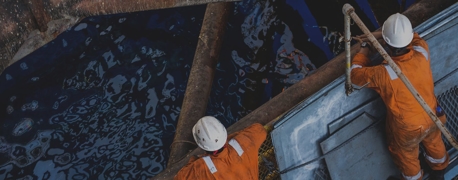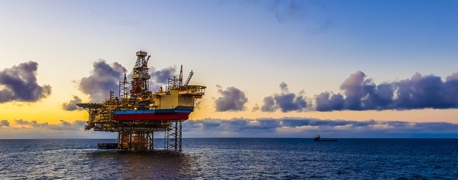Safety at Sea: What Maritime Companies Owe Their Crews

Maritime work has been a part of human life for thousands of years, and it has remained one of the most dangerous jobs in the world for that entire time. For all the new technological advancements and new industries that have come and gone, maritime work still has many of the same inherent hazards. Transportation accidents—getting to and from vessels—remain the industry’s most common cause of casualties.
Over time, efforts to improve safety have led to strict national and international regulations, making compliance a critical part of all operations at sea. These regulations include protections for seamen and other maritime workers, and they impose an overarching responsibility on vessel owners and maritime companies to uphold safety standards.
So, what does safety at sea actually require?
The Safety Triangle of Maritime Work: Fact or Fiction?
In a 2012 ebook published by Maritime Insight called The Ultimate Guide to Personal Safety on Ships, the authors say that safety at sea is shaped by three priorities in this order: human well-being, clean sea, and commercial success. One of the book’s main points is that by prioritizing these three things in order, any maritime company “ensures growth and profitability.”
Obviously, as maritime attorneys who represent crew members and workers at sea, we agree with these priorities. But one problem with The Ultimate Guide is there isn’t any acknowledgment that these priorities conflict with each other in the real world. The idea that companies will prioritize human safety and environmental cleanliness to ensure commercial success is far removed from how companies actually make decisions.
For example, when the El Faro sank in 2015, the ship was in dire need of maintenance—which is, on its own, an example of poor safety practices. Despite its poor state and a hurricane forming along their route, the captain and the vessel owner decided to push the crew ahead to its destination. Even after the crew expressed concerns about their route, the captain remained on course. Prioritizing human safety would have dictated staying in port and getting repairs; instead, the captain and the company steered into the hurricane. As a result, 33 crew lost their lives, making it the deadliest shipping disaster in over three decades.
Why did the ship push ahead despite the hurricane? There could be a number of reasons. Ultimately, shipping delays are costly, and the captain didn’t think the cost of waiting out the storm outweighed the benefits.
Maritime companies have a troubling history of failing to practice adequate safety on their own. Safety at sea ensures that risk is mitigated and lives are saved, but it doesn’t ensure “growth,” which is why companies have to be compelled to provide crews with the safety equipment and training they need. Firms like ours hold maritime companies financially accountable for the crew members who are injured or lose their lives on the job, which is what forces them to change their safety policies.
What Crew Members Can Do & What Companies Need to Do
The ebook recommends five checks every worker ought to make before beginning any job or on-site project. While doing a quick situational check before every job is certainly a good safety practice, we want to emphasize that an individual safety check does not solve the most dangerous problems workers face at sea. At most, individual checks mitigate the risk of small-scale accidents that are common to most industrial worksites.
The authors recommend that workers make the following five checks before beginning work:
- Situational awareness: Take a moment to clock the other work going on around a given job and where it is in relation to other parts of the ship, rig, or worksite.
- Risk calculation: Take note of what hazards you’ll be subject to during a job. Are there workers above you moving heavy equipment or operating with tools at a height? Are you at the edge of the rig/vessel, where you could potentially fall overboard? Is the weather clear?
- Risk mitigation: Take whatever steps possible to mitigate the risks you’re facing.
- PPE: Make sure you’re wearing appropriate protective gear for the job risks you’re facing, including harnesses or flotation devices if you’re working at a height above water.
The issue with these safety checks—and with making job safety a matter of individual caution more broadly—is that they don’t account for the accidents created by company policy. Just before the El Faro was lost, the crew went to the captain and expressed concerns about steering into the path of Hurricane Joaquin. The crew had done the safety check: they’d become aware of their situation, calculated the risk, and attempted to mitigate that risk by convincing the captain (and by extension, the company) to take a different route.
The problem is that when the El Faro’s owners were given a choice between mitigating risk and mitigating cost, they chose to lower costs—and the crew and their families paid the price. Safety is ultimately a matter of company policy, which is why it’s the companies who need to take legal and financial responsibility for preventing accidents at sea.
Reframing Safety At Sea as a Company Responsibility
The ebook authors put forward eight responsibilities every at-sea worker must take up. We think these eight responsibilities primarily belong to employers, vessel owners, and management—all of whom have much more say when it comes to how workplaces are run. Consequently, we’ve reframed these responsibilities to make the company the responsible party.
Here are the eight responsibilities as originally written, followed by our reframing:
- Follow safety policies >> Enforce safety policies with targets and goals
- Develop situational awareness >> Provide situational briefings
- Develop know-how and training >> Provide training to verify workplace know-how
- Use PPE >> Provide PPE
- Prioritize your own safety first >> Facilitate workers taking proactive safety precautions for their own sake
- Know your ship inside out >> Provide frequent training to familiarize workers with the vessel
- Know your emergency duties >> Train workforce in proper emergency response
- Avoid panic attacks >> Provide resources to help workforce manage panic attacks
At the end of the day, the company decides how safe a workplace gets to be, regardless of whether a group of workers abides by safety protocol or not. That’s why the company needs to be held accountable under maritime law after every at-sea disaster or serious accident. If they’re not held accountable, then nothing will get safer—and workers will continue to suffer the consequences.


